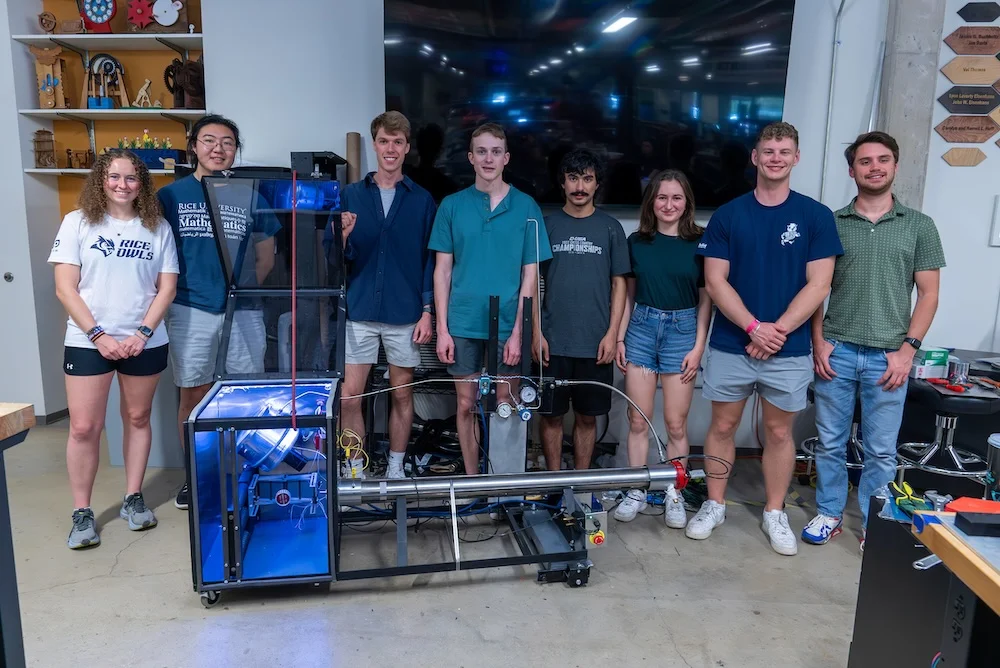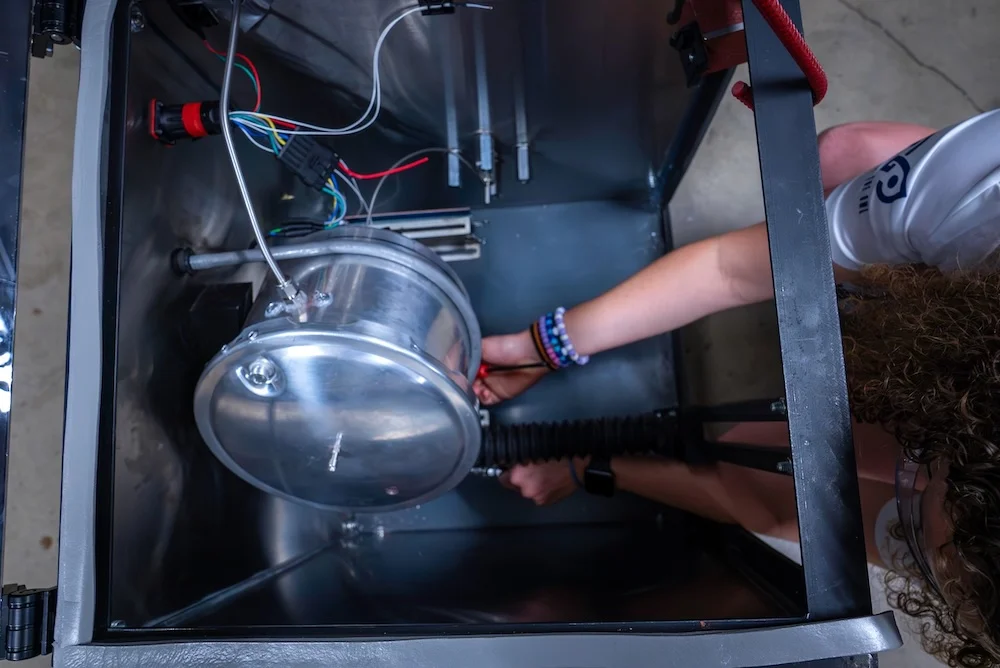
A team of students at Rice University in Houston has developed a cold spray metal 3D printing device that relies on pressure and velocity rather than temperature to create a metal part. Their work could help expand the repertoire of metal additive manufacturing techniques, bringing down cost and enhancing the quality of making or repairing one-off complex metal parts.
Team AeroForge members used the device to successfully deposit copper, demonstrating the viability and potential of their prototype. The project won an Excellence in Capstone Engineering Award and first place in the Willy Revolution Award for Outstanding Innovation at the annual Huff OEDK Engineering Design Showcase. The project was also the recipient of this year’s Hershel M. Rich Invention Award, presented to Rice engineering students or faculty members for ‘original invention development’. ‘We’re very excited and very relieved,’ team member Julianna Dickman said. ‘We spent many late nights in the Oshman Engineering Design Kitchen, and it feels very rewarding to get recognized for our work.’
‘Traditional metal 3D printers generally use a laser to melt metal powder into a particular shape, but melting can really impact the properties of your product,’ team member Aasha Zinke explained. ‘Cold spray technology, which has been used for coatings, uses velocity instead of heat, basically accelerating metal particles so fast that they adhere to and deform onto a substrate. The system that we’ve designed aims to accomplish that in a 3D-printing capacity.’

Applications for the device include the manufacture and repair of metal parts with a complex structure, such as components used in industrial assembly lines or in vehicles or aircraft. Industries that rely on metal components ⎯ automotive, oil and gas, defence ⎯ can incur significant losses as a result of supply chain disruptions, so the team hopes its device can provide a viable, low-cost alternative for making or repairing parts on demand.
Davis Thames, who first pitched the idea for the project to a teammate almost a year prior to the start of the senior design class, explained the advantages of using the cold spray metal 3D printer over welding. ‘Typically with repairs, you can only remove material as you reshape a metal part,’ he said. ‘But with this process, you can add material, and then machine it back down. With welding, for instance, varying melting temperatures may result in uneven material properties. We don’t have that issue with this device.’
The device consists of a tank that feeds high-pressure nitrogen gas into the system; controls that regulate valves and monitor pressure and temperature; a pressure vessel, which heats the gas to 450°C; a powder feeder designed to dispense metal powder into a nozzle at a precise rate; and a custom nozzle.
Dickman explained that while the gas does get heated, ‘it is still a cold spray system because when the gas meets powder in the nozzle, it is expanded out of the nozzle and cools very quickly. The particles never melt, they really never see temperature ⎯ the temperature only serves to increase the speed of the gas, which imparts its momentum on the metal powder, which can then accelerate to our substrate and adhere.
A lot of the team’s efforts was focused on reducing costs, since most metal 3D printers can cost more than US$1million. Team AeroForge built its device for less than US$5,000. ‘One of our big innovations here is making the system so much cheaper,’ team member Grant Samara said. ‘A lot of our parts were machined in house, for instance the pressure vessel, because that’s potentially a very dangerous thing. Other parts, like the nozzle, are proprietary, so it’s not something that you can find elsewhere. The nozzle is a very difficult part to manufacture – we had to develop new processes to make it.’
Metal powders are dangerous if inhaled and working pressurized gas also adds another layer of safety considerations. The team worked with the environmental health and safety department at Rice to make sure it abided by all guidelines during testing. One of the safety specifications is that no one is allowed to be in the room while the system is in operation. To ensure safety, the team implemented a complex monitoring system and a three-part data logging system. ‘We’ve implemented lots of security checks,’ team member Galio Guo said. ‘For example, there’s a particular hierarchy in which you can actually open up the switches.’
Eli Case, who worked on the nozzle and heater design and on the software, said that one of the main takeaways from the project for him was the importance of having people with different areas of expertise working together.

Another takeaway was how critical it is to build more room for contingency in the project timeline. Douglas Hebda confirmed that for the team, it had been ‘pedal to the metal trying to fix the designs that were not going to work. Inevitably, everything takes twice as long as you thought it would.’
Working on the capstone design project made classroom knowledge come to life, he continued. ‘You may be taking an engineering class on stress analysis and think, “I won’t be building a bridge any time soon.” But then you’re doing stress analysis on the tie rods of a pressure vessel, and seeing that be very real and getting real torque specs out of it. When you go fix your car, the book says what you tighten the bolts to. Now we’re the book ⎯ we’re coming up with what those values are. So doing that and being confident in those answers is really cool.’


